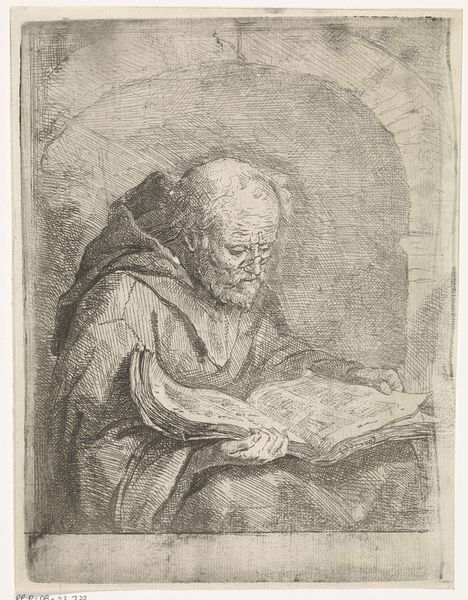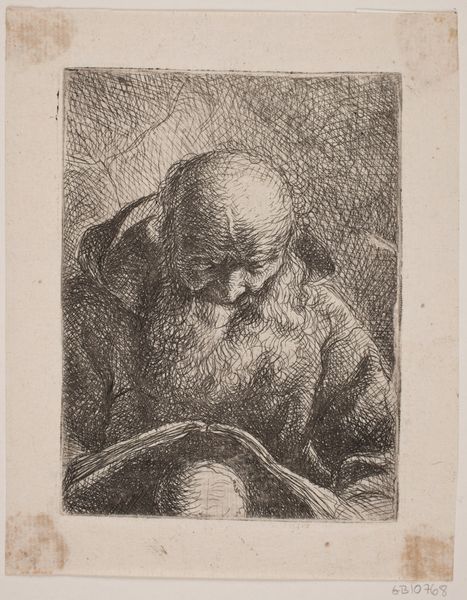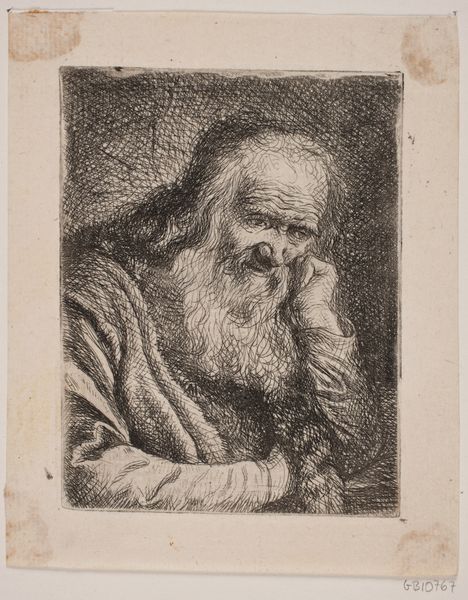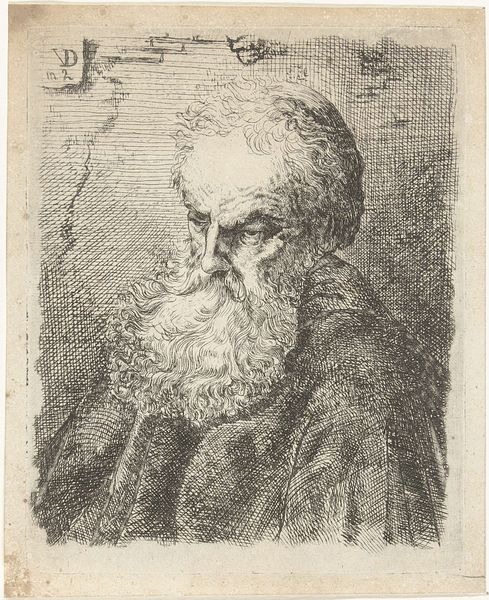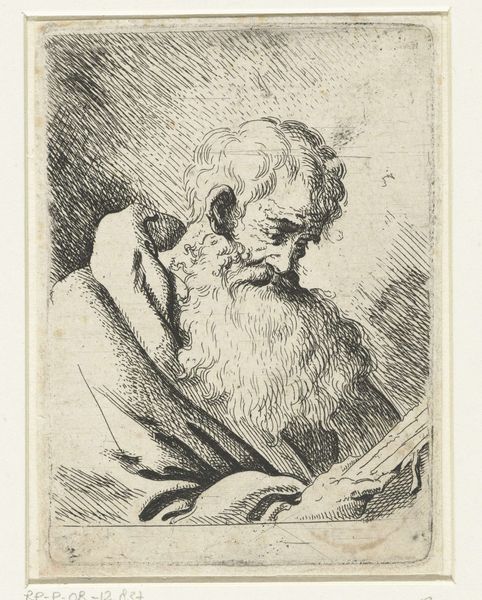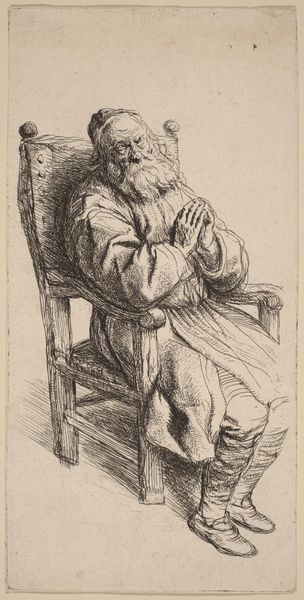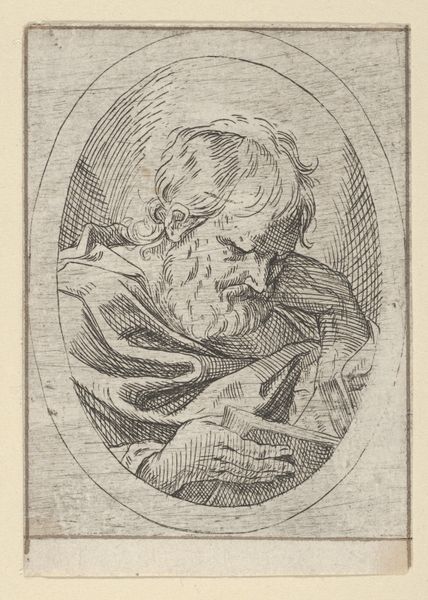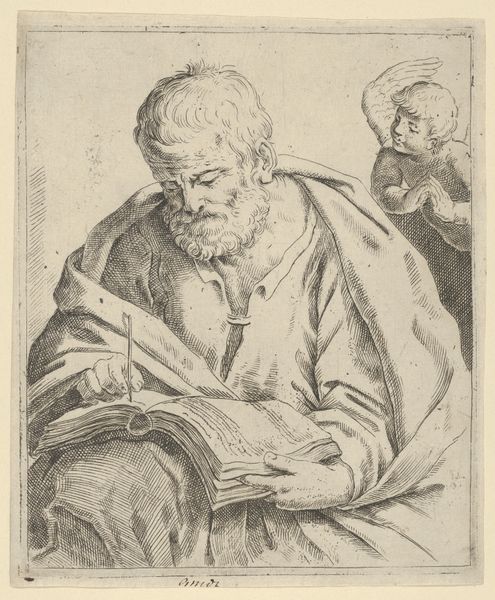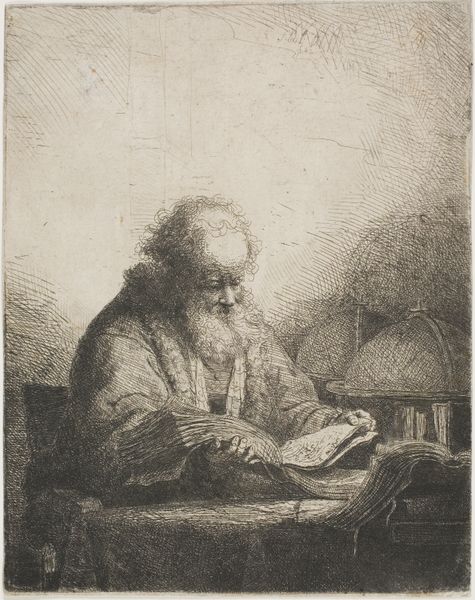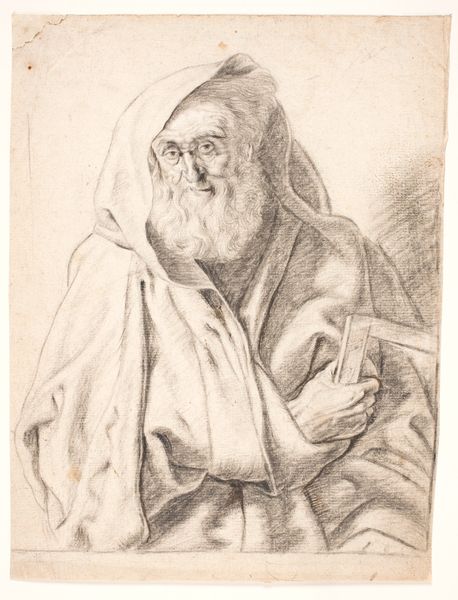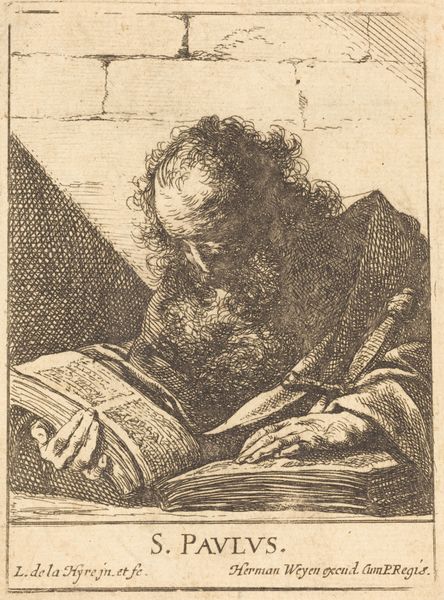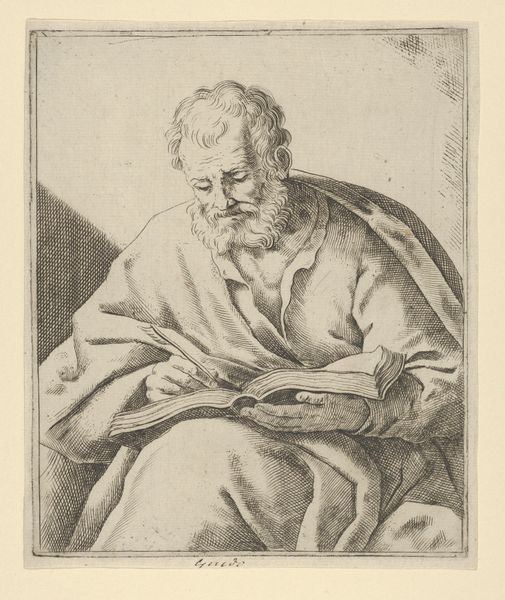
drawing, print, engraving
#
portrait
#
drawing
#
baroque
# print
#
portrait drawing
#
engraving
Dimensions: height 114 mm, width 74 mm
Copyright: Rijks Museum: Open Domain
Curator: Here at the Rijksmuseum, we're looking at an engraving titled "Lezende monnik," or "Reading Monk," of uncertain authorship, though likely dating sometime between 1626 and 1799. Editor: The cross-hatching gives it such a heavy, somber feeling. The density of the lines really weighs down the figure. Curator: Indeed. Notice how the engraver uses the density and direction of lines to define form and volume, creating a play of light and shadow. Observe, too, how the monk’s hooded garment, indicated by stark dark lines, directs us back to his face. Editor: Yes, and the texture—you can almost feel the coarse wool of his habit. It makes you wonder, though, about the actual process of creating this. Was it a print meant for mass production, or a unique artistic experiment? What kind of labor went into carving those incredibly detailed lines? Curator: Intriguing questions! Focusing on the image itself, we see how the composition draws us into a meditative space. The figure is hunched over the book, creating a sense of intimacy and quiet contemplation. Editor: I think knowing who would have acquired a print like this gives it even deeper context; a merchant class? Perhaps even members of the cloth itself? It makes you consider the availability of this image, too. Paper and ink don't just appear you have to have someone involved with sourcing. Curator: Precisely! The subject matter allows for many layers of inquiry, doesn’t it? It also echoes a long tradition of depicting scholars and religious figures, engaged in intellectual pursuits. Note the figure’s delicate hand and how that simple gesture guides our attention to the page being read. Editor: Seeing how accessible art making can become by looking closely at engravings and prints really speaks to the core of materialism. Thinking of those outside the main figure in the work here at play really pulls so much out of such a small engraving! Curator: Yes, precisely! Thinking along this thread, "Lezende Monnik" really epitomizes the capacity for close observation to inform a deeper structural reading of forms, even from the hands of an unknown master. Editor: Absolutely, that intersection between accessible creation and consumption, and artistic intention in works on paper, is truly something worth reflecting on further.
Comments
No comments
Be the first to comment and join the conversation on the ultimate creative platform.
